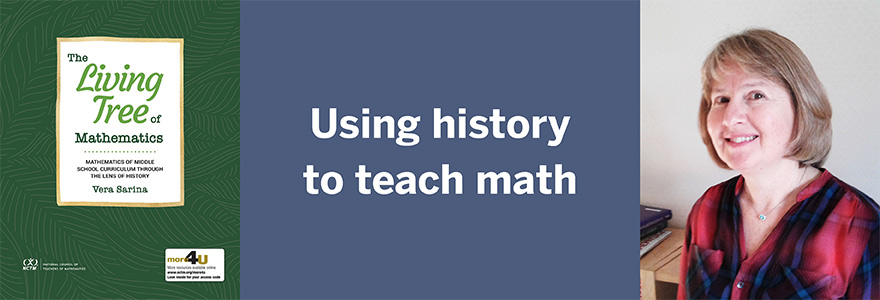
New book uses history to teach math

History and mathematics may seem like polar opposites on the education spectrum. However, when you take a closer look, understanding history can help students learn about math concepts.
That’s according to a new book from Western Education instructor Vera Sarina that is being published by the National Council of Teachers of Mathematics.
‘The Living Tree of Mathematics: Mathematics of Middle School Curriculum through the Lens of History’ incorporates the history of mathematics into the math curriculum of middle school students. She takes math content that teachers and students are struggling with and places it at its origins in history. Sarina also represents different cultures in history as well as around the world by using historical vignettes and alternative mathematical approaches.
Sarina, a self-described history buff, believes that the study of history allows one to make more sense of the current world and its trends and problems including the ones we encounter in present-day mathematics classrooms.
“Using an historical perspective can show the roots of a concept as well as different historical approaches to teach the concept,” said Sarina. “And where to look for the essential ideas of mathematical concepts if not in the history of their development?”
Sarina uses an equity-based perspective to introduce how various cultures think about mathematics and how they teach it. She also addresses how teachers can incorporate students’ cultures into lesson planning.
In fact, culturally responsive pedagogy is important for communities that are diverse, said Sarina. While teaching in Toronto, she referenced students’ cultures while discussing various math concepts such as negative numbers or fractions. She said the students became excited and more engaged in their learning.
“Equity means finding the way to close the gap, to give the opportunity to do math from different perspectives,” said Sarina. “Mathematics is a global affair because we developed it as a humanity together.”
In addition, using alternative mathematical approaches, such as the Chinese method for finding the greatest common factor, gives students different entry points to meet and master curriculum expectations. Sharing stories during math class connects different cultures, civilizations, names and faces. Now, the internet can enhance stories by adding pictures and videos, said Sarina.
In her book she discusses how teacher candidates and classroom teachers can use history to teach such mathematics concepts as operations on numbers, measurement, fractions, algebra, negative numbers and the coordinate plane.
“This approach, first and foremost, provides you with a very valuable part of the pedagogical knowledge of the subject you teach. The entire body of mathematical knowledge is very much like a tree. All concepts are connected – everything goes from the roots. The history of mathematics offers one insights into the best ways to teach and learn these concepts.”
For more information about ‘The Living Tree of Mathematics: Mathematics of Middle School Curriculum through the Lens of History’, visit the NCTM Store.

